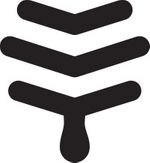We cannot emphasise enough that it is best to consult local beekeepers on this topic as advice will vary greatly depending on local conditions. If there is a bee club near you, we encourage you to join it or find a local mentor who can offer you support.
Wintering preparations will be based around the needs resulting from your local climate – in areas that have mild winters with winter forage, considerations will be far fewer than for areas which experience freezing conditions.
How to overwinter your beehive
To help you get winter-ready, we’re releasing this video from our Online Beekeeping Course, in which Frederick Dunn gives a thorough rundown of winter preparations in a cold climate.
Join TheBeekeeper.org for more educational videos and to start learning beekeeping the easy way.
Flow Hive wintering
Wintering with a Flow Hive is much the same as with conventional Langstroth equipment.
1. Ensure your bees have enough honey to get them through winter. Check the honey stores in the brood box or boxes. Are there capped honey cells?
2. If your Flow Super is full of honey, remove the queen excluder, and put the Flow Super back on.
3. If there is no honey in the Flow Super, remove it. To store your Flow Frames, wash them in warm to hot water and allow to dry thoroughly before storing them. Remember: Flow Frame plastic is UV sensitive, so it’s best to keep them in a dry, dark place.
4. Wash and store plastic queen excluder.
5. If you have to feed I suggest you place freezer bags of syrup, equal parts sugar and water, on top of the crown board. Cut a few small slits in the bags for feeding access.
TIP: A way to tell if your colony is thriving during winter is to “heft” (lift) your brood box. Simply put, if you can feel your brood box becoming lighter, feeding may be required.
How do I pack down a Flow Hive for winter?
Main concerns for winter
There are a few main concerns for a beehive over the winter months, these include, but are not limited to; the colony starving, not having enough population numbers and the colony freezing, and the queen becoming stranded below the queen excluder.
This response is specifically oriented toward overwintering the Flow Hive where cold conditions make it necessary to make winter preparations (you can also find plenty of general information about overwintering bees on the web. Our Community Forum is a great place to start).
Our Flow Hives consist of a brood box and a Flow Super (you can also add an additional brood box if this is your preference).
Have a full honey super to feed on
In cold climates the general recommendation is for the bees to have a full honey super to feed on during the cold months. It is important to consider your bees overwintering needs towards the end of the season and to leave them the appropriate stores for winter. Leaving your Flow Super on the hive with a good store of honey will give your colony the best chance of surviving, however, you also need to ensure the queen can access these honey reserves.
During a cold winter, the bees do not forage but will steadily use up the honey stores in order to stay warm. The queen will not be laying brood at this time, so the colony will form a cluster around the honey that it is consuming in order to both feed and retain their optimal temperature. This cluster will gradually move up into the honey super over winter when stores are depleted in the brood box.
Remove the queen excluder
If you have a queen excluder in place the queen will not be able to move up with the colony and will starve. Therefore, it is recommended that you remove the queen excluder as part of your preparation for winter. Remember to replace the queen excluder again when the warmer weather arrives checking first that your queen is back in the brood box.
Add insulation
Adding insulation to the top of the hive is also a good overwintering practice. Styrofoam, wool insulation, etc. can be placed between the top cover and the hive roof. In the Flow Hive Classic, to minimise cold draughts it’s a good idea to put the corflute slider in the top position, and for all hives reducing the size of the entrance to being just 30mm (an inch) or so wide is generally recommended.
Reduce hive to one brood box
Some cold climate beekeepers prefer to reduce their hive to one box—the brood box— over winter. There are usually one or two frames of honey on each side of the brood, and this, plus the option of feeding them a sugar solution or fondant gets the colony through the winter. This eliminates issues with the queen excluder and there are advantages to the bees being confined to a smaller space. If you decide to take this approach, at the end of your nectar flow season extract the honey in the Flow Super and leave it in place for a day for the bees to clean, then remove the Flow Super with Flow Frames and the queen excluder. Replace the inner cover and roof onto the brood box, adding some insulation in between.
Flow Frame storage
To store your Flow Frames, wash them in warm to hot water and allow them to dry thoroughly before storing them in a cool, dry, dark* location for the winter.
*The Flow Frame plastic is UV sensitive.
These two options apply to the complete Flow Hive setup with a single brood box and Flow Super, however, with advice, you may want to add an extra brood box or standard super to your hive giving you more choice in overwintering configurations.




